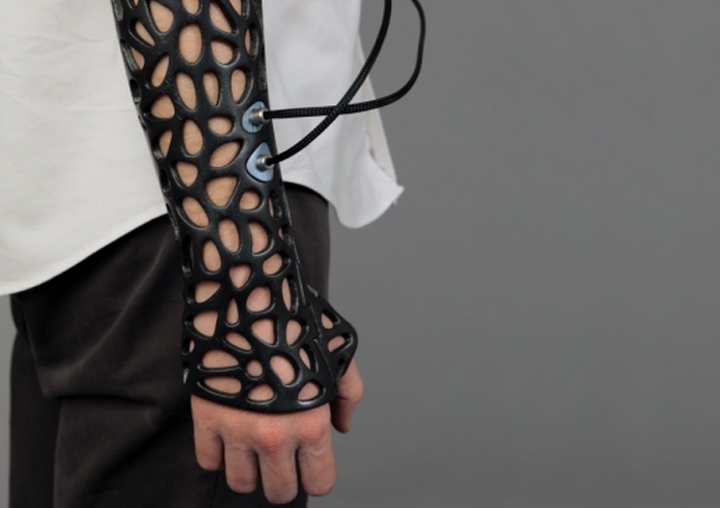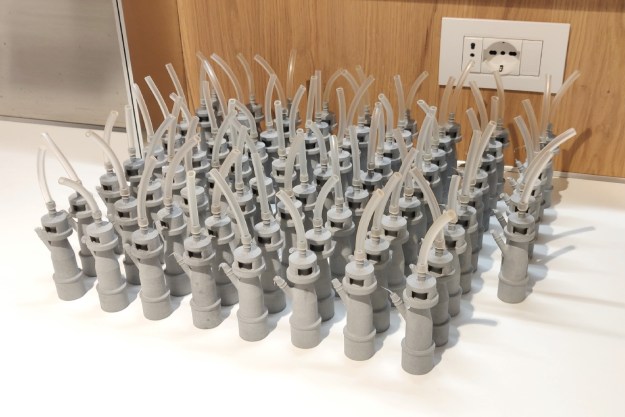
If you’ve ever broken a bone, you know firsthand just how horrible traditional casts are. Hell, even if you haven’t broken a bone, you still probably have a decent idea of how awful casts are, assuming you’ve been within smelling distance of anyone who’s wearing one. After about a week they start to smell like a rotting hog carcass that’s been baking in the sun for three days, and often get itchier than a poison oak rash — but thankfully technology might soon make them obsolete.

3D-printed casts (an idea that’s been around for a couple years now) could alleviate the odor and itch issues caused by plaster casts, but even though they’re not widely available yet,Turkish student Deniz Karasahin has already taken the idea a step further. winner of the 2014 Golden A’Design Award, Karasahin’s Osteoid cast prototype uses tiny ultrasonic vibrations to speed up bone healing time by up to 40 percent.
The bone healing capabilities of low-intensity pulsed ultrasound (LIPUS) have been known for decades, but the treatment is difficult to administer because it requires ultrasound leads to be placed on the skin, directly over the injured area of the bone. With traditional plaster casts this is basically impossible, but a 3D-printed cast that leaves patches of skin open would make it easy. Osteoid’s simple, skeletal design allows ultrasonic drivers to be built directly into the cast.
It’s still just a design prototype at this point, but given the rapid pace at which 3D scanning and printing technologies are progressing, we wouldn’t be surprised to start seeing these kinds of casts adorning the arms of reckless people all over the globe within the next year or two.
(Images via A’Design Award)
Editors' Recommendations
- 3DMakerpro’s Seal is a pocket-sized scanner to make next-gen precision 3D prints
- Need a last-minute Halloween costume? Check out these 3D-printable getups
- The future of making stuff: Inside the evolution of 3D printing with Formlabs
- Father’s Day Gift Idea: These cheap 3D printers are on sale for less than $300
- 3D printing lets hospitals make ventilator substitutes with common equipment




